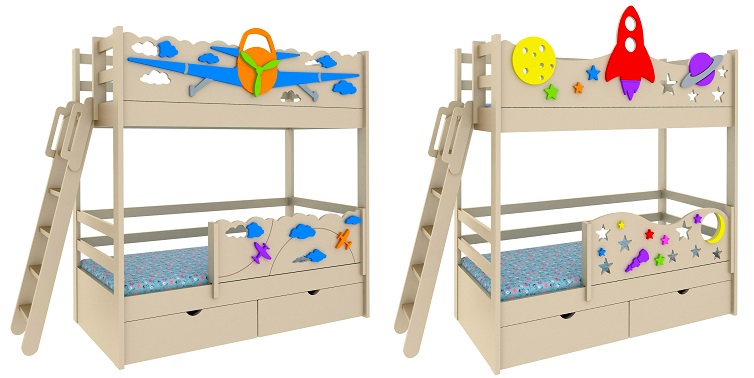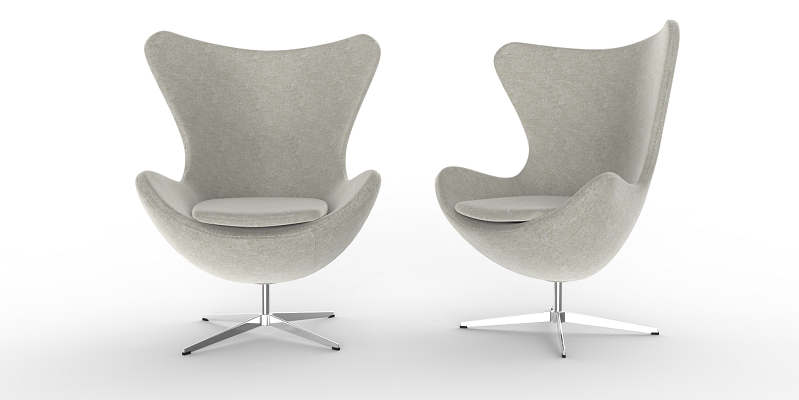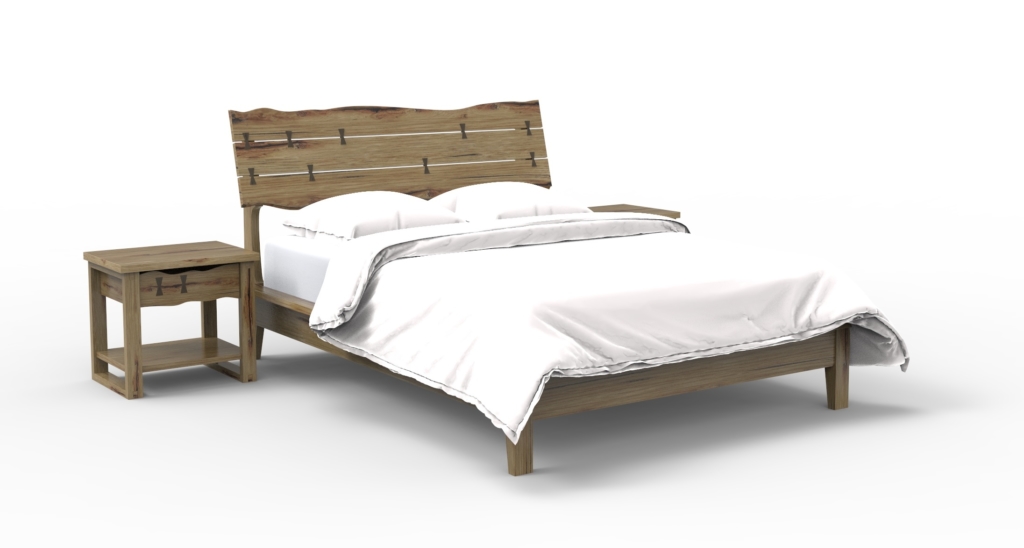There is an old proverb that says, “there is nothing new under the sun.” There may be some truth to that sentiment, but if it were entirely accurate, then I think a lot of CAD designers and inventors would be out of a job.
In one of the more ironic and humorous stories from history, albeit an apocryphal one, the United States Commissioner of Patents is reported to have said something along the lines of “everything that can be invented has been invented.” This was in 1899, and it appears that he was incorrect.
Now, the validity of the statement surely comes into question, but the sentiment is applicable to the conversation at hand. Is there any use designing something new in today’s world? If you’re reading this article, I would assume your response to that would be an emphatic “yes” because our purpose here is to innovate, design, and reimagine the world around us.
Furniture manufacturing is a fairly advanced field—namely because all the easiest routes have already been taken. Couches, chairs, and beds have been designed and changed for hundreds, if not thousands, of years. It makes innovation difficult if any possible idea you could come up with has been used and recycled over the past few centuries.
In that situation, it is very tough to find something new under the sun. So, many furniture design services have turned to technology to help them reimagine furniture and household items.
It is no surprise that the advent of business computing technologies in the 1950s and 1960s coincided with such a drastic departure from tradition in terms of interior design and furniture production. Things were radically reimagined in the 1960s, no pun intended. Many of the styles associated with “mid-century” design come from the exploration of the basics of geometry and unexpected combinations of shapes, colors, and textures.
Benefits of 3D Modeling for Your Furniture Manufacturing

As the world progresses and embraces more advanced computing techniques, the benefits of technology are self-evident for the design and manufacturing of new pieces of furniture. There are many opportunities today to model and design something virtually and even test it out in a virtual space before putting it into production.
When 3D modeling and design can help us redesign so many other things, it seems foolish to avoid using the latest trends in technology to inform the new trends in consumer design services and furniture.
You can use 3D rendering and modeling techniques to design and experience entire landscapes for any number of different industries—from energy and gaming to real estate. Furniture design is simplistic by comparison. In fact, many of the walkthroughs and design demonstrations for real estate and other markets will incorporate virtually designed versions of furniture, so the task is already being completed.
This technology can expand the field of your creations by magnitudes. 3D modeling is at the forefront of design and not only can it help you design traditional pieces of furniture, but it can also help you create entirely new concepts.
From there, it can even facilitate the marketing and sales of your enterprise for these new designs. Let’s examine five ways 3D modeling helps furniture manufacturers and producers when they are launching new product lines.
Allows for Faster and More Creative Prototyping

The most obvious benefit of 3D modeling services is the ability to create faster and more creative designs and prototypes. 3D modeling offers numerous ways to accomplish this. You can take shapes or existing designs, perhaps from an old schematic, and look at them from literally any angle.
You can even perform seemingly impossible actions—stretching them in a single dimension, extruding the shape, or inverting pieces on the fly—to try and explore different designs for the product.
The software allows you to step into a virtual space so that you’re unrestricted by the encumbrances of the real world. When you have torn it apart and created something that looks interesting and unique, you can step back into the real world and figure out how to produce it.
RELATED: Top 10 Furniture Design Software Used by 3D Modeling Freelancers
The speed of the process can’t be overstated either. With a design software package, you can draft and design entire pieces in hours, instead of spending days or weeks scribbling over blueprints, chalkboards, or whatever else you’re using to design.
With a design software, however, a drafting and design service can sketch, extrude, and scrap drawings in an instant, all without losing your work. If you make a change to design but end up deciding you hate that update you made, it’s only a single click to resolve the issue.
With the design phase, there is an added benefit that will help you design and decide on your projects. You can perform virtual testing on each of your designs to ensure that they meet whatever standards or requirements you have for your piece of furniture. Even the most simplistic of modeling packages can do stress and strain testing to show how a piece will hold up to various pressure loads. You can analyze weak points in the design (such as the vulnerability of certain corners of a couch to determine if it will break when too many people sit on it).
If you get into more advanced software packages for your 3D modeling project, you can examine air and heat flow around and through a product, and even simulate water absorption, flammability, and so much more. While it will never be able to replace real-world testing, these software packages allow you to mitigate the need for it as much as possible.
Allows the Designer to Incorporate Realism into Designs

When you’re making a new product, particularly something that will be used by regular consumers in their house, it can be extremely useful to put an element of realism into the design. There are a couple of ways to do this. The first and most clear cut is to design your product to have real-world looks to it. For example, if you’re crafting a chair, you can make it look as sleek and inviting as you want, but if it doesn’t look like something that could actually exist in the real world, people will likely not purchase it.
You can incorporate finishes that will make the product look far more realistic to the average consumer—such as a wood grain finish to make it appear like it’s made of wood or a brushed metallic sheen. These design considerations are obviously possible with a handmade design, but it’s far easier to incorporate when you’re doing the work on a computer program.
Not only is it easier, but it’s also significantly more realistic. A computer is much more adept at modeling and recreating real-life elements than the human hand is. Things like texture, lighting, shading, and nuances of color are all quantized and can be examined and incorporated in fine detail to ensure that they are accurately represented. This level of detail is difficult, if not impossible, with a hand-drawn design.
Beyond incorporating realism into the actual design of the product, the 3D rendering designer can also add elements of reality to the surroundings of the piece of furniture under construction to create a more realistic setting for a pleasing visualization to consumers. It is significantly easier to visualize how you would use a product if you could see it in a realistic setting, such as placing the newly designed chair at a table in the kitchen.
Incorporating realism gives the product a sense of life and depth. This lifelike quality captivates the user so they feel more connected with the piece of furniture and can visualize and experience it better. In the end, the sale is an experiential one, and realism conveys a better experience than something that seems clunky or unlifelike.
Enables You to Reuse and Adapt Designs with Little Effort

One of the most flexible aspects of computer technology is the memory capacity. We’ve all experienced the terror of a major computer malfunction in the middle of an important project and the fear that all your work has been lost. Every college student has some version of that story, and it’s typically because they’ve been rushing to complete a paper moments before it’s due. In the days prior to autosave and document recovery, this was one of the most crushing and heartbreaking events that could happen to a student, or really anyone working on a substantial project.
Fortunately, as I mentioned, with the advent of new technology that automatically saves documents and prior revisions, your information is cataloged and stored for future reference so you never have to worry about losing important projects or documents in the middle of work.
The ability to save a sketch or schematic that a mechanical drawing service has made for future reference is truly invaluable in this day and age. The immediate benefit is obviously that your work is protected and backed up in the event of an emergency. This protects you from losing precious hours of work.
Saving and being able to see different revisions of a project is extremely useful. You can go and look at previous versions to see what updates have been made throughout the design. This allows you to easily go back and make revisions or revert the design to previous versions when you are working without having to redo those design elements completely. Frequently after creating something, we will realize we preferred it better a different way that has already been scrapped, so it is necessary to recreate those design changes.
Beyond the obvious saving and reversion capabilities, however, you can duplicate your efforts with ease. Perhaps you have designed a new coffee table that looks exquisite, and now your boss wants you to create a whole product line based around those design elements—kitchen tables, chairs, side tables, etc. You can duplicate the file you had already created with a single click and then adjust the proportions and details to work with those other types of products without issue.
Obviously, I am minimizing the total work that needs to be done because there are many more details than just the size and overall shape of objects, but you can easily scale up the coffee table and extend it to the size of a dining room table, or shrink it so that it fits as a side table. From there, you can mold these individual designs into exactly what you want for the new products.
The beauty of using 3D design freelancers is that every design is available in every iteration for you to duplicate and manipulate. You can branch one design off into multiple individual designs to create similar products and adapt them to different consumer bases with ease. The flexibility offered by this technology allows you to refine and recreate whatever details you want easily.
Allows You to Test a Product Prior to Launch

We mentioned this briefly before, but there is exceptional testing capability with 3D modeling software packages. There is an amazing benefit in being able to test a virtual design as opposed to performing physical testing on the finished product. It’s like trying on an outfit before you leave the store—you know you like the way something looks, but will it fit properly? Does it function well? There are so many considerations beyond the aesthetics of the design that need to be accounted for when creating a new product line.
Some of the most vital testing considerations are stress testing and flammability testing when it comes to furniture manufacturing. Even the simpler versions of SolidWorks have the capability to do virtual stress testing measurements. The product that is designed is overlaid with a map of lines of force, which sounds like something out of Star Wars. These force lines demonstrate how forces will be distributed over the surface and throughout a designed object, prior to even considering joints and materials that are involved with the finished product.
A manufacturing design service can examine these force lines and simulate applying forces in certain areas to show where areas of high pressure or tension may reside. This is extremely useful when designing a chair or bed frame that takes a large amount of constant force—you can determine what will happen when that force is applied and where there may be deficiencies. These programs can even simulate deformation if you include the requisite information—they factor in whether or not the applied force and resultant stress is higher than the threshold for deformation or collapse and can tell you that failure or disfiguration may occur at certain points.
RELATED: How Does 3D Modeling Help Furniture Manufacturers Launch New Company Product Lines?
Even more impressive is the ability to simulate the effect of certain materials on the design. Because these are just computer simulations and not real-world tests, they can’t perfectly simulate every potential design flaw or issue with material (such as a weak spot in a metal rod), but they can approximate how different materials will behave under these conditions.
If you design a chair and tell the program that the frame will be made of steel, but the legs will be oak with walnut mortise and tenon joints connecting them, the program can accurately simulate how much pressure will be held within each joint and how the chair will behave under the stress of bodyweight.
Using the material properties stored in the system, these software packages can accurately simulate how flame and heat will propagate through a product to determine the burn rate. This is vital for certification and accreditation for many international furniture products because you need an acceptable burn rate so that fires are prevented as much as possible.
Offers the Opportunity for Animation for Marketing and Promotions

Take a look at the possibilities offered by 3D modeling and rendering for visualization and animation and you’ll be stunned. The offerings are truly staggering. The final stage in the product design services process is launching and selling your product, and this is also the most exciting and enjoyable one.
Let’s be honest, the end result we’re all expecting out of this is higher profits. If this technology helps you create a better product to sell, that’s excellent, but it really gets fun if it creates better ways for you to sell any product. Combine the two functions and you have an unstoppable solution to drive product creation and sales.
RELATED: How 3D Modeling Can Cut Costs in the Furniture Market
A 3D rendering can incorporate animation and displays that really show off your new product line. For instance, many furniture companies will present an animated reconstruction of the product to demonstrate how it can be assembled when it is purchased.
Or perhaps you want to include a walkthrough demonstration with different products from the product line in a virtual living room to show how they would look in the real world. 3D rendering creates a virtual workspace that allows you to simulate and model large portions of the real world so that you can attract customers and show them the best aspects of your product.
In fact, the main limitations on what you include in a 3D virtual reality rendering for marketing is whatever you wish to show the customer and what you would like to remain hidden. If you want to advertise the flammability characteristics of your products for whatever reason, you could incorporate an animation of the chair being lit on fire and smoldering slowly instead of bursting into flames.
This may seem nonsensical, but many LED manufacturers did a similar demonstration in marketing presentations to show how much heat their products would put off in comparison to regular lightbulbs—championing the safety and energy efficiency of their products.
Cad Crowd’s 3D Modeling Freelancers Can Help with Your Furniture Design
You can get started today with Cad Crowd’s voluminous database of skilled freelance mechanical engineers and designers. Many of them are skilled in product design, modeling, and testing, so they will be able to create pieces of furniture to meet all of your needs.
In fact, some of them may have a background in furniture production or interior design that can help inform your project in unexpected ways. Either way, there is no better solution than incorporating some form of 3D modeling into your product design.
You can use Cad Crowd’s resources to get started and begin designing a new product line today, from conception all the way through to marketing and sales. Find out how it works.
